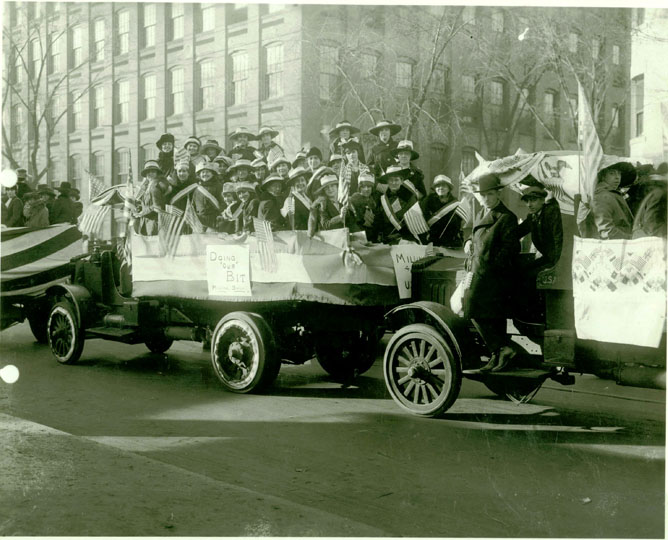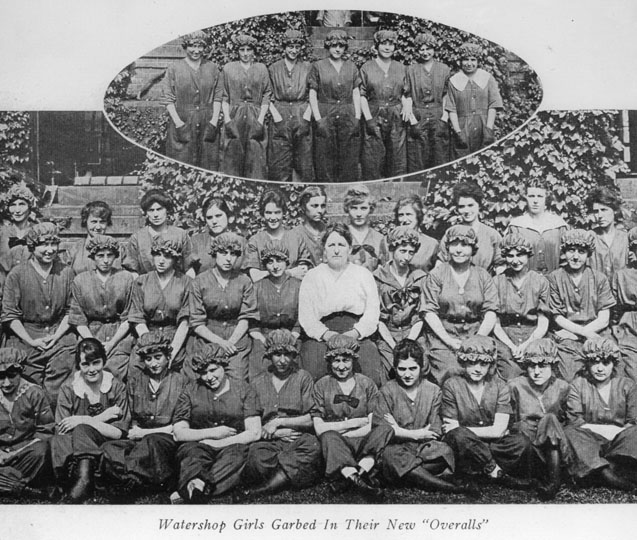
Women participating in an Armistice Day parade.
"During the participation of the United States in World War I, women entered the
Springfield Armory workforce for the first time, as it more than doubled from
2,265 workers in June 1917 to 5,129 in June 1918. There were 235 women were on
the payroll in June 1917, generally employed in filing, inspecting, packing,
and sorting, but also in some machine work. By Armistice Day in November 1918,
748 women and 4,633 men were on the payroll, a ratio of 16% to 84%. Of those
5,381 men and women, 2,214 (41%) were dismissed by May 1919. The first to be
fired were women whose families did not depend on their earnings, then women
who were able to return to peacetime jobs; then men and women both according
to their efficiency ratings, but with preference given to veterans among the
men and to women who were the sole support of families whose men were still in
military service. By July 1919 the percentage of employees who were women dropped
to 6.4%. Between July 1919 and July 1920, the civilian work force was about halved
again. Among the retained employees, the high proportion of piece work helped
preserve their wage levels." 1

Women inspectors and workers at the watershops.
"Although they then left heavy industry, these women left us a legacy in the
workplace. They forced America to examine more carefully industrial working conditions.
The sense that a munitions factory or armory threatened femininity, in ways that
a textile mill did not, hastened the arrival of safer and cleaner factories when
it was seen that productivity increases were the result. And, while female workers
of the First World War gained little that was lasting for themselves as women
workers, they smoothed the way for the next generation. Each had 'done
her part' in the hope of making a better world."2
1 CONSERVATIVE
INNOVATORS AND MILITARY SMALL ARMS: AN INDUSTRIAL HISTORY OF THE SPRINGFIELD
ARMORY, 1794-1968, prepared for US NPS by Michael S. Raber, Patrick M. Malone,
Robert B. Gordon, and Carolyn C. Cooper, August 1989.
|